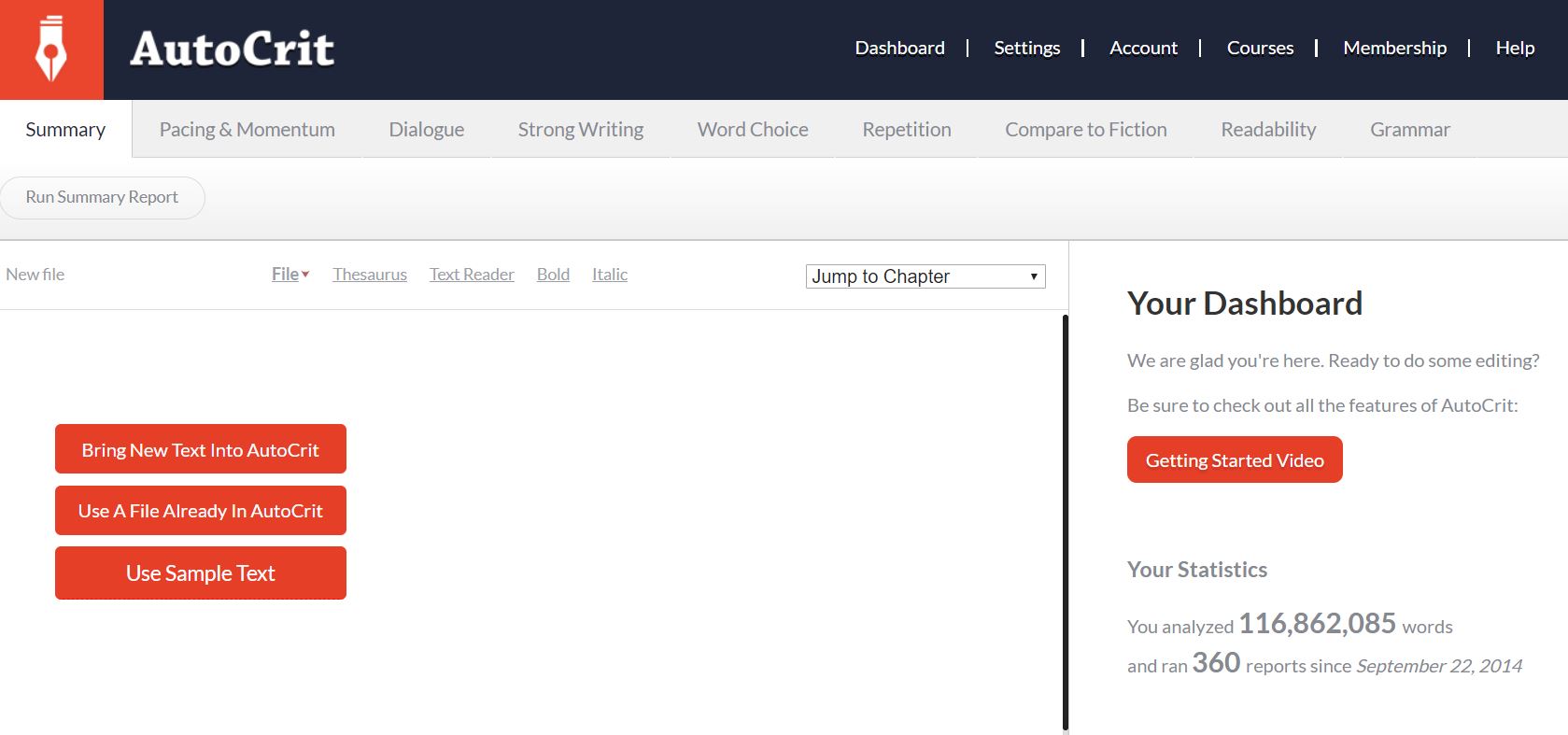Ah, AutoCrit – I have a love-hate relationship with you! No, not hate, maybe frustration at all of the possible ways you present to me that I may improve my manuscript. But that is also why I love you – and love wins out with you.
I need to issue a warning – AutoCrit will provide the writer with a tsunami of information. Everything from repeated words to verb tense to passivity (is that even a word?) to too many adverbs for the genre, AutoCrit is a very powerful diagnostic tool for the fiction author. And therein is one of its limitations – it is structured for fiction, not non-fiction. No, not limitation, feature – AutiCrit does not pretend to be something it isn’t.
AutoCrit examines a manuscript against industry averages to determine alerts on too many adverbs, sentence length and variation, and other variables. Is it perfect? I suspect not. But it does provide many paths the author ma choose to investigate.
That’s the key – “may choose to investigate.” Don’t choose them all, there’s simply too much information, else the writer will spend more time fine-tuning the manuscript to satisfy AutoCrit and not the readers. Never forget the readers are the primary concern.
I often say that AutoCrit has helped me become a better writer. I tend to use less adverbs and therefore produce tighter works. I also have shaken most of my passive bad habits. Not all, but I also catch them often before running an AutiCrit analysis.Adverbs, passive
AutoCrit won’t help with a bad story line – it’s not a developmental editor. Nor will it point out Point of View (POV) issues. You’ll have to diagnose and correct plot deficiencies and head-hopping yourself, or go the preferred route, hire developmental and copy editors. I did just that and learned much more, especially from the developmental edit process, but that shall be a post for another day.
Bottom line – I love AutoCrit. I have no interest beyond promoting a good product.
Screenshot from AutoCrit https://www.autocrit.com/